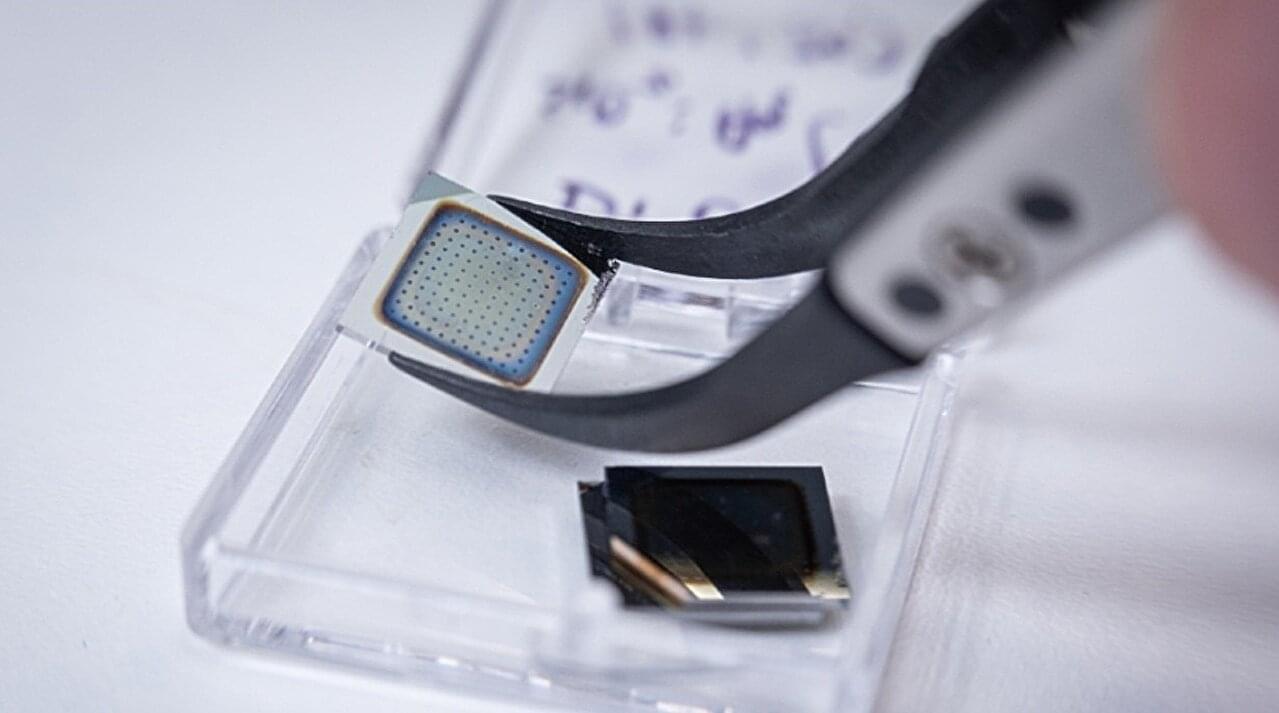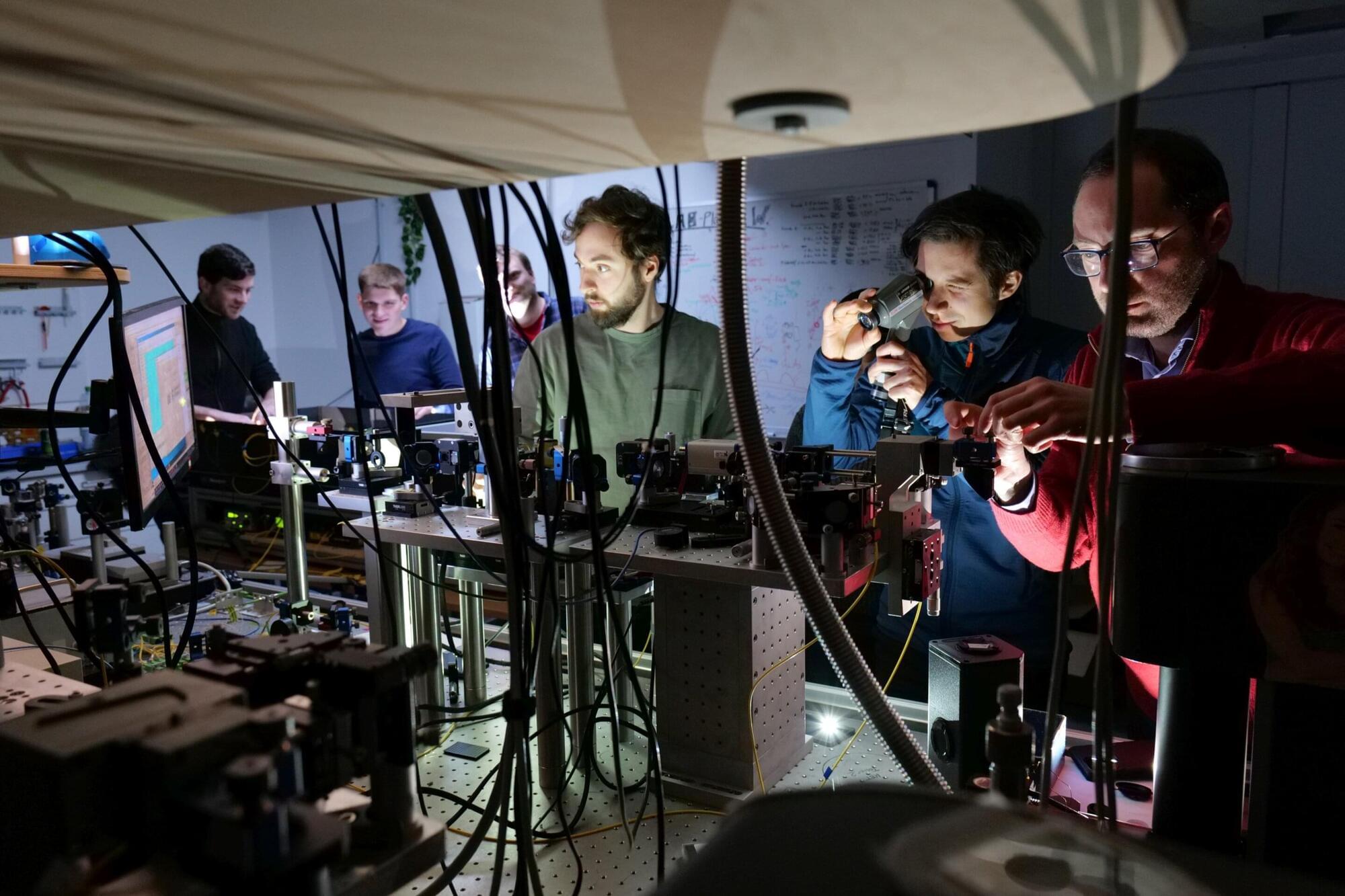Hugging Face co-founder and CEO Clem Delangue says all the attention is on LLMs, but smaller, specialized models will make sense in many use cases going forward.



The central clock drives metabolic rhythms in muscle stem cells.
Sica et al. show that the circadian clock in the brain controls daily rhythms in muscle stem cells. These rhythms affect stem cell metabolism and repair capacity, even in the absence of a local clock. The findings reveal how central signals shape tissue-specific stem cell functions through systemic cues like feeding.

A research team at the Jülich Supercomputing Center, together with experts from NVIDIA, has set a new record in quantum simulation: for the first time, a universal quantum computer with 50 qubits has been fully simulated—a feat achieved on Europe’s first exascale supercomputer, JUPITER, inaugurated at Forschungszentrum Jülich in September.
The result surpasses the previous world record of 48 qubits, established by Jülich researchers in 2022 on Japan’s K computer. It showcases the immense computational power of JUPITER and opens new horizons for developing and testing quantum algorithms. The research is published on the arXiv preprint server.
Quantum computer simulations are vital for developing future quantum systems. They allow researchers to verify experimental results and test new algorithms long before powerful quantum machines become reality. Among these are the Variational Quantum Eigensolver (VQE), which can model molecules and materials, and the Quantum Approximate Optimization Algorithm (QAOA), used for optimization problems in logistics, finance, and artificial intelligence.
Youtube caption.
On 11th of December 2025, Michael Levin gave a talk as part of the ECogS Conference hosted by The Embodied Cognitive Science Unit at OIST.
Title: Unconventional Embodiments: model systems and strategies for addressing mind-blindness.
Abstract: One of the most salient aspects of any agent’s environment is the question of how many, what kind, and what degree of agency exists in it. It is as relevant to biological organisms as to robots in human environments. It is also critical for scientists, philosophers, and engineers, as well as for human societies which will increasingly contain modified, synthetic, and hybrid beings of every possible description. In this talk I will argue that our evolutionary history has left us with significant mind-blindness, which makes it difficult for us to recognize minds of unfamiliar scales, problem spaces, or embodiments. I will describe our lab’s work to develop conceptual tools for recognizing and communicating with diverse intelligences. I will also present recent data from our new synthetic proto-organisms, in which we test those ideas by creating and studying the behavioral properties of beings who have not been specifically selected for them. I will conclude the talk with a speculative idea about the latent space from which novel intrinsic motivations ingress into physical, biological, and computational systems.
We made this video in partnership with the Cosmos Institute, a network of thinkers and builders advancing human flourishing in the AI era.
Read the Cosmos Institute Substack ► https://bit.ly/3XK5T7k.
Follow Brendan McCord on X ► https://bit.ly/3Y9pFLb.
Artificial intelligence is transforming our world, prompting us to revisit fundamental philosophical questions about human existence and purpose. In this interview, Brendan McCord, founder of the Cosmos Institute, examines how philosophical insights from thinkers like Aristotle, John Stuart Mill, and Alexis de Tocqueville can inform our approach to AI, ensuring it enhances rather than undermines human flourishing.
McCord outlines three crucial steps to align AI with the principles of autonomy, reason, and decentralization. By drawing on ancient wisdom, we can navigate the complexities of modern technology and create a future where innovation and human values coexist.
Reflecting on the transformative ideas from Copernicus to Turing, this interview offers a roadmap for finding our place in the cosmos amidst the AI revolution. Explore how we can build a society that prioritizes human potential in the age of technology.

Robots that can sense and respond to the world like humans may soon be a reality as scientists have created an artificial neuron capable of mimicking different parts of the brain.
Artificial neurons—tiny electronic circuits that replicate the way brain cells communicate—lie at the heart of neuromorphic computing, a field aiming to bring human-like intelligence to machines.
Despite rapid progress, today’s artificial neurons can only perform fixed tasks, each serving a narrow role. Thousands must be combined to replicate simple brain functions—a costly, energy-hungry process compared with the brain’s effortless adaptability.
Bipedal (two-legged) robots are sophisticated machines, but they are not the most graceful when things go wrong. A simple push, fall or an obstacle can send them crashing to the ground, often resulting in expensive damage to sensitive components such as cameras.
To solve this problem, researchers at Disney Research in Zurich, Switzerland, have developed a new system that ensures that when gravity brings a robot tumbling down, it falls softly and gracefully.
Existing techniques to protect robots when they topple over do not offer control or effectively minimize impact. Actuators might freeze, causing the robot to stiffen and hit the ground hard, or they might go limp, leaving the robot to tumble chaotically. Other methods rely on pre-programmed falling motions, but these only work for slow movements or simple falls.

Everyday life on the internet is insecure. Hackers can break into bank accounts or steal digital identities. Driven by AI, attacks are becoming increasingly sophisticated. Quantum cryptography promises more effective protection. It makes communication secure against eavesdropping by relying on the laws of quantum physics. However, the path toward a quantum internet is still fraught with technical hurdles.
Researchers at the Institute of Semiconductor Optics and Functional Interfaces (IHFG) at the University of Stuttgart have now made a decisive breakthrough in one of the most technically challenging components, the quantum repeater. They report their results in Nature Communications.

A global campaign dubbed ShadowRay 2.0 hijacks exposed Ray Clusters by exploiting an old code execution flaw to turn them into a self-propagating cryptomining botnet.
Developed by Anyscale, the Ray open-source framework allows building and scaling AI and Python applications in a distributed computing ecosystem organized in clusters, or head nodes.
According to researchers at runtime security company Oligo, a threat actor they track as IronErn440 is using AI-generated payloads to compromise vulnerable Ray infrastructure that is reachable over the public internet.
Scientists say a new kind of AI could bridge the gap between current systems and machines that learn and think more like us.